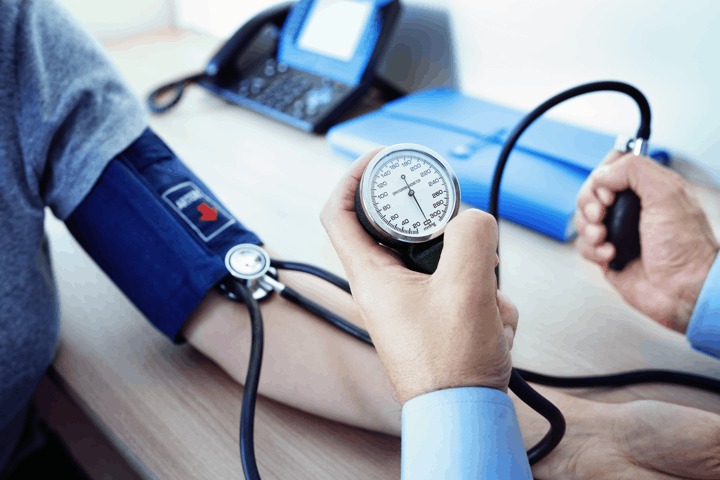High Blood Pressure
Blood pressure is the pressure exerted on the walls of the arteries when the heart pumps; the term “systolic” is the top reading on a blood pressure monitor and relates to the maximum pressure exerted on the artery when the heart contracts, and the term “diastolic” is the bottom number and is the minimum pressure exerted on the artery when the heart relaxes. Both the systolic (top reading) and diastolic (bottom reading) are important:
for adults aged 40 to 69
every 20 mmHg increase in systolic blood pressure
or 10 mmHg increase in diastolic blood pressure
Doubles
the risk of death from coronary artery disease
High blood pressure (hypertension) is a very common condition, affecting 1 in 4 adults in the UK and 70% of people over 70 years of age. There is a direct relationship between high blood pressure readings and the incidence of coronary artery disease and stroke:
half of coronary artery disease cases
and two thirds of stroke cases
are due to raised blood pressure
Blood pressure changes throughout the day, tending to be highest in the morning and lowest in the evening. It can rise transiently with stress and will be higher during physical activity than before.
30-40% of patients who have high blood pressure readings with a doctor are actually suffering from “white coat hypertension” and have normal blood pressures outside of a clinic setting, and equally 15% of people have “masked” hypertension, where blood pressure is normal with a doctor but high elsewhere.
Blood pressure measurements vary depending on how and where they are measured. Measurements with a doctor, known as office blood pressure readings, are generally higher than measurements obtained by individuals using a home blood pressure monitor or with a 24 hour blood pressure monitor known as ambulatory blood pressure monitoring.
Recommendations for treatment of blood pressure
A number of different factors influence the point at which a patient would benefit from medication to lower blood pressure, but broadly speaking the following apply, based on office readings:

However, in patients with a history of cardiovascular disease, treatment is recommended with readings of ≥130/≥80, and in frail patients the threshold should be individualised.

Related links:
Tests - Blood and Urine
Blood and urine tests can be very useful for diagnosing a vast number of conditions, and also for checking that a medication is working properly and not causing any adverse effects on the liver or kidneys. Read more
Tests - Echocardiography
Echocardiography is the study of the heart using ultrasound. Similar to a scan of a baby undertaken during pregnancy, an ultrasound probe applied to the chest wall can be used to study the heart. Read more
Tests - Ambulatory BP Monitoring
An ambulatory blood pressure monitor will obtain a series of blood pressure readings during the monitoring period (usually 24 hours), which will allow the doctor to determine whether a patient’s blood pressure is consistently high enough to require treatment. Read more
Treatments - Medical Therapy: High Blood
Pressure
There is a degree of discord internationally regarding the thresholds for treatment, and the UK guidelines do differ slightly from their European and American counterparts. Read more
Education and Support - Hypertension
Resources for patients who are concerned about their blood pressure. Read more